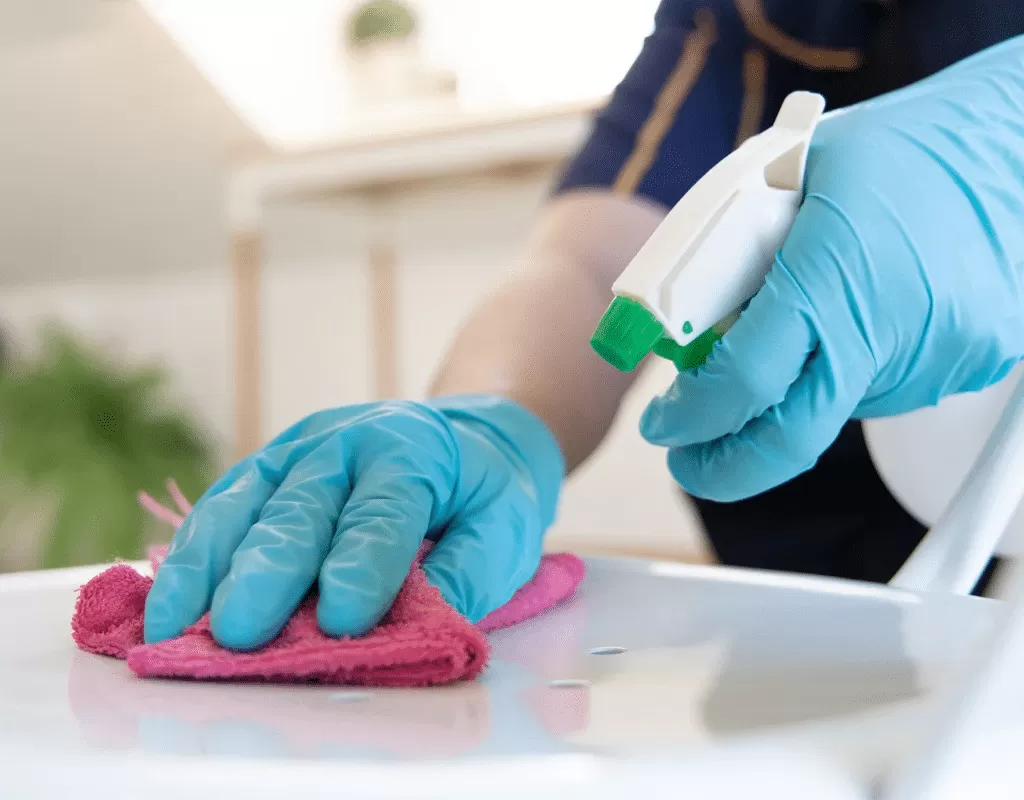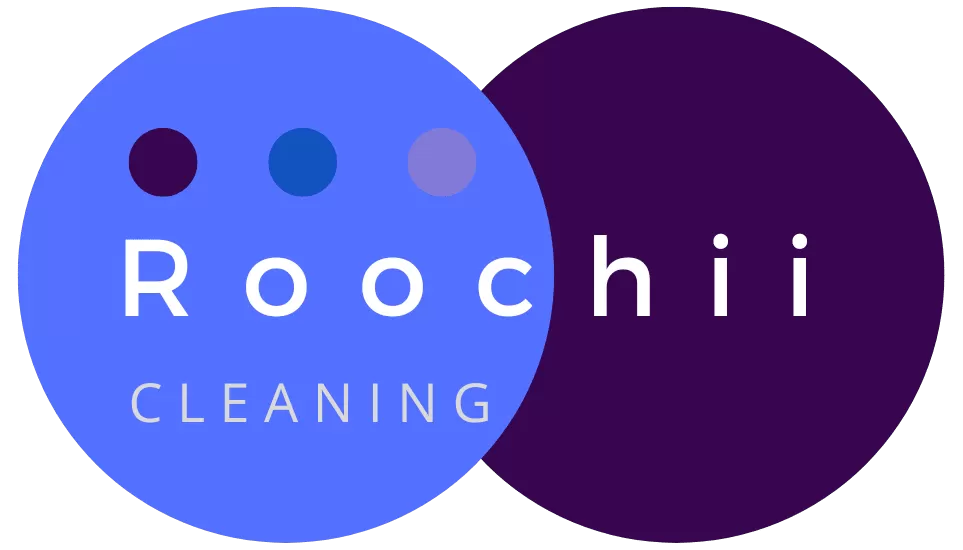How long does a professional deep clean take? In other words, what is the true cleaning time for a Deep Cleaning?
Customers often perceive cleaning as a task that can be done quickly for several reasons:
- **Underestimation of Effort:** Cleaning may seem straightforward, and people might underestimate the effort and time required to thoroughly clean a space. Customers might think that a quick surface wipe or a vacuum is sufficient, without considering the details involved in deep cleaning.
For example, delving into the meticulous art of cleaning involves a thorough approach. From meticulously dusting ceiling fans, blinds, window sills, moldings, doors, and door knobs to attending to each individual item on furniture, the process extends to vacuuming, addressing every nook and cranny of couch pieces, making beds with precision, and ensuring a pristine clean beneath all furniture, beds, and rugs
This comprehensive cleaning ritual isn’t a swift affair; rather, it unfolds as a careful choreography of tasks, taking up to 45 minutes in just one room. It’s more than a cursory swipe of a microfiber cloth along the baseboards. It’s a meticulous endeavor, especially when confronted with challenges such as stubborn grease stains or an excess of pet hair. Each blind demands individual attention, and depending on their type and condition, the process of cleaning them alone can span anywhere from 15 to 30 minutes. In essence, it’s a crafted symphony of cleaning, ensuring every element of the space is treated with the utmost care and attention to detail.
- **Media Portrayal:** Media portrayal plays a pivotal role in shaping societal perceptions, and when it comes to cleaning, movies, TV shows, and advertisements often present a distorted image of the reality of the cleaning process. In these visual narratives, cleaning is frequently depicted as a swift, almost effortless task. Characters effortlessly and rapidly tidy up spaces, magically transforming cluttered or dirty environments into pristine conditions within a matter of minutes.
This idealized depiction creates unrealistic expectations about the speed and ease of cleaning in the real world. Viewers may subconsciously absorb the notion that, much like the characters they see on screen, they should be able to accomplish thorough cleaning quickly and without much effort. This cinematic portrayal not only oversimplifies the complexities of cleaning but also fosters a misconception that the process is inherently rapid and hassle-free.
The time compression evident in media representations contributes to a disconnect between fiction and reality. In the real world, cleaning involves a multitude of tasks, each demanding attention to detail and time investment. From dusting and vacuuming to scrubbing and organizing, these activities collectively form a comprehensive cleaning routine that can’t be neatly condensed into a cinematic montage.
Moreover, the absence of the more laborious aspects of cleaning in media narratives, such as moving furniture, dealing with stubborn stains, or engaging in meticulous tasks, further distorts perceptions. Viewers may not fully appreciate the depth of effort required for a truly clean and well-maintained space, as these less glamorous but essential aspects of cleaning are often omitted for the sake of storytelling brevity.
In summary, media portrayal perpetuates an unrealistic image of cleaning as a quick and easy task, influencing audience expectations and potentially leading to frustration or disappointment when confronted with the more time-consuming reality of maintaining a clean living or working space.
- **Product Advertisements:** Product advertisements wield a significant influence on consumer perceptions, and this holds particularly true in the realm of cleaning products. Advertisements for cleaning solutions frequently emphasize the allure of fast-acting formulas and the promise of immediate, transformative results. The vivid portrayal of surfaces swiftly transitioning from grimy to gleaming creates an expectation that using these products will expedite and simplify the entire cleaning process.
In these advertisements, there’s a deliberate focus on showcasing the efficacy of the cleaning product in rapid and visually striking scenarios. Stains disappear within seconds, surfaces shine effortlessly, and the entire cleaning ordeal seems condensed into a matter of moments. This portrayal not only captures attention but also instills the belief that the advertised product holds the key to a quick and efficient cleaning experience.
As a result, customers may unwittingly absorb the notion that the success of the cleaning endeavor hinges largely on the choice of cleaning products. The appeal of speedy results becomes a persuasive factor, and individuals may assume that incorporating these advertised products into their cleaning routine will inherently make the entire process faster and more effortless.
However, the reality often diverges from these carefully crafted narratives. While certain cleaning products may indeed offer effective solutions for specific tasks, the overall cleaning process remains a comprehensive endeavor that involves a range of tasks beyond the scope of a single product. Customers may find themselves disappointed when confronted with the realization that achieving a thoroughly clean and well-maintained space requires more than the quick-fix promised by product advertisements.
In essence, the influence of cleaning product advertisements contributes to a perceptual gap, where the desire for a swift and efficient cleaning process is fueled by the alluring promises of fast-acting formulas, sometimes leading customers to overlook the broader, more time-intensive aspects of effective cleaning practices.
- “ Desire for Convenience” – In a contemporary, fast-paced society, the prioritization of convenience has become a hallmark of modern living. Individuals often find themselves engaged in a multitude of activities and responsibilities, leaving them with limited time for domestic chores. In this context, the desire for convenience plays a pivotal role in shaping people’s expectations regarding the time required for tasks such as cleaning.
The fast-paced nature of daily life, characterized by hectic schedules and a constant juggling of responsibilities, has led to an inherent inclination towards streamlined and time-efficient solutions. As a result, individuals may harbor a genuine wish for cleaning tasks to be completed swiftly, allowing them to allocate more time and energy to other pressing commitments or leisure activities.
This desire for convenience can significantly influence the perception of how long cleaning should ideally take. In an effort to align with the overarching need for efficiency, individuals might inadvertently underestimate the intricacies involved in thorough cleaning processes. The notion of completing tasks quickly becomes a priority, potentially overshadowing the recognition that certain cleaning activities demand a more deliberate and time-consuming approach for optimal results.
Ultimately, the desire for convenience not only reflects a practical response to the demands of modern life but also shapes individuals’ expectations regarding the pace at which daily tasks, including cleaning, should be accomplished. This dynamic interplay between the quest for efficiency and the reality of meticulous cleaning processes contributes to the broader narrative of how people approach and perceive domestic responsibilities in today’s fast-paced world.
It’s important for customers to understand that effective cleaning often requires time and attention to detail. Next time the question arises, “How Long Does a Deep Clean Take,” practising realistic expectations can lead to better results and satisfaction with the cleanliness of their living or working spaces.
In conclusion, customers often perceive a Long Deep Clean as a quick and straightforward task due to various influences, including an underestimation of effort, media portrayal, and the impact of product advertisements. The desire for convenience in today’s fast-paced society further contributes to the expectation that cleaning should be a swift process. However, the reality, as detailed in this exploration, is that effective cleaning is a meticulous and time-consuming endeavor, involving a choreography of tasks that demand attention to detail.
The idealized depictions of cleaning in media and the promises made by cleaning product advertisements create a perceptual gap between expectations and reality. These influences lead individuals to anticipate quick and effortless cleaning processes, often overlooking the comprehensive nature of the task. The desire for convenience, driven by the demands of modern life, further reinforces these expectations, potentially causing individuals to underestimate the time and effort required for thorough cleaning.
It is crucial for customers to recognize that achieving a truly clean and well-maintained space involves a thoughtful and time-intensive approach. Realistic expectations can pave the way for a more satisfying experience with the cleanliness of living or working spaces. By understanding the intricacies of the cleaning process, individuals can make informed decisions, prioritize effective cleaning practices, and ultimately strike a balance between the desire for convenience and the reality of maintaining a pristine environment.




